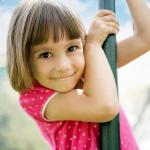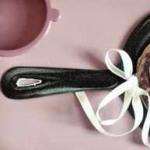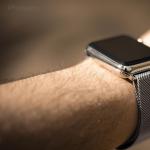Final classes 2 ml gr. Direct educational activities
Municipal state preschool educational institution
“Kindergarten No. 421 of a combined type named after. S.N. Rovbel."
JOURNEY
Prepared by: Saichenko Tatyana Dmitrievna
2015
Training tasks:
1. To consolidate children’s knowledge about behavior in the forest.
2.Cry the count to three.
3.Create knowledge geometric shapes.
4. Reinforce knowledge of colors (blue, green, yellow, red).
4. Strengthen the ability to correlate the number 3 with quantity.
Developmental tasks:
1.Develop attention and memory.
2.develop logic.
3.development of coherent speech.
Educational tasks:
1.foster a love of nature.
2.Cultivate friendships.
Preliminary work.
1. memorizing the poem “sun”
Equipment:
Chairs, music Center, table, fruits, vegetables and 2 baskets
- Organizational moment. Creating an emotionally positive background for the lesson.
Journey into the forest.
Educator: Guys! Look who flew into our group?
Children:magpie
The teacher opens the envelope
Yes, this is an invitation from the sun to the spring forest. But how can we get to the forest, because it
is far away.
2. Think with the guys about what you can use to get to the forest.
Repeat types of transport.
Children: You can get to the forest by bus, bicycle, car, etc.
Educator: What great fellows you are! You know everything! - What else does the titmouse have here?
Yes, these are also tickets, in the shape of figures.
3. consolidate knowledge of geometric shapes and colors.
Educator: Let's remember what shapes these are.
(The teacher shows, and the children take turns calling the shape and color of the figures)
Well done!
Educator: Guys, look at the bus on which we will go on a trip.
(There are chairs in the shape of a bus and on each chair, instead of a number, there is a geometric figure glued)
Educator: Now I will give you tickets, you look at them carefully and find your seats.
(Children find their seats and sit down)
Educator: Is everyone sitting down correctly? Are you comfortable?
Educator: Then let's go on a trip!
Phys. Minute: Bus
Educator: Stop: Stop. Here we are.
(Children get off the bus)
The sounds of the forest are heard.
Educator: Guys, what do you hear?
4.Develop monologue speech.
Children: birds sing, trees make noise, insects buzz, etc.
Teacher, what are we hearing?
Children: sounds of the forest.
Educator: that's right, well done!
Good forest, old forest!
Full of fabulous wonders!
We'll go along the tropics
Quietly we will enter it.
Guys, before we enter the forest, we must remember the rules of conduct in the forest.
Children: (together with the teacher)
5. Conversation on the topic HOW to behave in the forest.
Strengthen knowledge of rules of conduct in the forest.
Do not break tree branches;
Walk along the paths;
Do not shout. Don't light a fire
Educator: So we ended up in the forest. What time of year is it now?
Children: spring
So what kind of forest have we come to?
Children: spring forest
Educator: Well done! And how did you determine that the forest is in spring?
6.Talk about seasonal changes in nature.
Description of seasonal changes in nature.
Children: the snow has melted, the leaves are blooming, there is a lot of green grass,
The first flowers are blooming.
Educator: What are the first flowers you know?
Children: Snowdrops, dandelions.
Educator: Guys, what kind of sun is there in spring?
Children: bright, warm, etc.
Educator: Guys, remember, we watched nature on a walk and learned that the mood in spring can be different. Which?
Children: happy and sad.
Educator: when spring has fun from the heart and rejoices, do we see?
Children: sunshine
Educator: Guys, let's show how spring frowns, and how
having fun.
(Children show their mood with facial expressions)
Educator: Well done!
Oh! look who's greeting us?
Children: forest dwellers: foxes; the Bears; bunnies
Educator: Guys, are these wild or domestic animals?
Children: wild animals because they live in the forest
Educator: Let us tell you about the fox, what do they look like?
Children describe: the fox is red and big, she has a long fluffy
tail,.
7. Fix the count to three.
Educator: let's count how many foxes are under the tree
Children:1 23
Educator: Well done!
Guys, what does a bear look like?
Children: he is big, clubfooted.
Educator: let's count the bears
Children:12
Educator: Guys, tell me, what does a hare look like?
Children: he is fluffy, has long ears and a short tail.
Educator: Let's play with you?
Children: Yes!
Outdoor game “The bunny galloped through the forest”
Educator:
Oh! Guys, we found ourselves in a cheerful clearing, how beautiful it is here.
Grow beautiful flowers and butterflies fly.
Teacher guys, who is this?
Children: This is a bee, it buzzes and collects pollen. w-w-w-w
Educator
Guys, what is this?
Children: sunshine!
Educator: Guys, let's remember the poem about the sun.
Children, together with the teacher, recite the poem “Sunshine”
The sun rose in the morning
And off we went for a walk.
And on our street
He liked everything!
The sun ran
Golden path.
And the sun came
Directly to our window.
Educator: Well done!
Guys, what can you tell us about the sun, what is it like?
Children: yellow, radiant, warm, and yellow.
Educator: - Guys, if you drew the sun, why would you
started?
8.Development of fine motor skills.
Do we draw first? Let's draw guys in the air.
Children: circle
Educators: after we draw a circle, what should we draw?
Children: rays
Educator: there are flowers in the clearings, what are they called?
(Children dandelions)
Teacher, let's first count the dandelions.
Children count. The guys in the clearing, forty of us, as promised, left a treat for us.
Did you guys like our walk into the spring forest? What's special
do you remember?
(Children's answers)
All of you guys are great, you completed all the tasks easily.
Today we remembered: what spring is like, its signs,
visited the forest and clearing, remembered
what sounds does a bee make? Well, now it's time for us
back to kindergarten, let's take our seats on the bus.
Phys. Minute: Bus
Goals: development of cognitive, communicative, motor and emotional spheres.
Tasks:
- development of social interaction skills
- formation friendly attitude to others
- instilling interest in the world around us.
- consolidate knowledge about domestic animals, vegetables and fruits.
Equipment: pictures of transport, animals, dummies of vegetables and fruits, cut-out pictures of an airplane, train, construction set, doll, pictures of a city, circles of red, yellow and green colors, a fruit basket.
Nod move:
1. Record a baby crying or include a doll.
Who's crying? (listing children's names)
This is our doll Masha. Who hurt her? Why is she crying?
Masha wants to go to her grandmother. Let's see the girl off. Can I drive or walk alone? Why?
The teacher asks the doll: “Where does your grandmother live?”
Masha replied that she was in the village.
Shall we help the doll? Shall we go or go to the village?
The teacher suggests for the trip ambulance, fire truck.
Children must explain why they cannot drive these cars. From the proposed pictures, they choose transport suitable for transporting people - an airplane and a train.
2. Airplane.
Our plane buzzed
Let's take off.
Right wing forward
left wing forward
1,2, 3, 4 – we flew above the ground.
-Where did we fly to? Is this a city or a village?
(on a magnetic board there are pictures of the city.)
Children name the distinctive features of the city and the village: many and few cars, people, shops, large and small houses, the presence of perks.
Where do you live? What is the name of the city?
We need to cross the street, how to do it correctly?
(children's answers about zebra crossings and traffic lights)
D/game "Red, yellow, green"
We continue our journey by train.
3. Steam locomotive.
Steam locomotive, locomotive
Brand new, shiny,
He drove the wagons
Like it's real.
Who's on the train?
Our kids
Here is the station. Where have we arrived? How did you guess that this was a village?
(children's answers about pets)
Look, grandma is meeting us. She wants to show us who lives in the barn.
A game “Who lives in our barn?”
Children use onomatopoeia to guess the inhabitants.
Grandma showed you her pets, but you need to help her collect the harvest. Let's go to the garden and collect vegetables in one basket and fruits in another.
Children place dummies in baskets.
Well done, it's time to go home. We'll go back in the time machine.
We close our eyes and say: “You are car 1,2, 3 – take us home”
(the teacher quickly removes the attributes).
On the tables there are cut-out pictures and a construction set.
4. Design.
Let's remember where we were? What did you travel on?
One group folds an airplane, another a steam locomotive, a third a car.
5. Summing up.
Where have we been? What they were doing?
Did we do a good job? What are we like? (hardworking, friendly)
The teacher draws attention to the basket:
Whose basket is this? Who could give it to us? Grandma sent us a treat.
May 2015
Prepared by Valentina Viktorovna Klishina.
Construct of direct educational activities
Second junior group.
View: Integrated educational areas (artistic development, physical development, cognitive development, speech development).
Type: Final.
Target : remember the Russian folk tale “Three Bears”, in which fairy tales there is a bear character, develop coherent speech; name the signs of spring, classify foods according to the characteristics “fruits”, “vegetables”; distinguish geometric shapes; repeat quantitative counting from 1 to 5.
Tasks:
Educational:
- Explain the causes of rain;
- Strengthen children's knowledge of vegetables and fruits, counting from 1 to 5.
- Support children’s desires to express their opinions, draw simple conclusions, develop children’s horizons, thinking, and curiosity.
- Strengthen the ability to distinguish geometric shapes: rectangle, square, triangle, circle; distinguish colors.
Developmental- Improve skills in working with materials for productive activity, develop speech,
Educational- Learn to correctly identify the signs of spring.
Educational- Stimulating interest in creativity.
Vocabulary work:
Sponge, water, transparent, light, magical, soft, light, flowing.
Principle of education: creating positive emotions, instilling in children sincere feeling joy of delight.
Teaching principle: visibility, consistency, accessibility.
Education methods: be able to create a game situation, tell and encourage.
Teaching methods: psycho-gymnastics game, finger game “How many rains do we know”, artistic word “Spring” conversation, joint actions.
Progress of the lesson:
1 introductory part:
Little Brownie Kuzya enters to the music:
- Hello guys!
I came to you from a fairy tale,
I brought you a chest,
But my chest is not simple,
With magic it is not empty!
And now we will prepare for a journey into a fairy tale.
(Psychological gymnastics “Cheerfulness”)
We hear everything
We see everything
We breathe and inhale
And we remember everything!
Well done! Now you are ready!
2 main part:
The brownie opens the chest and says:
- What a mess it is here!
I need your help.
Hurry up guys help me
Put everything in order.
Music sounds (visiting a fairy tale)
From the magic chest, Little Brownie takes out attributes for the fairy tale “The Three Bears” and conducts a conversation on the issues.
Tell me, from which fairy tale did the bears come to us?
What are their names?
(Mikhailo Ivanovich, Nastasya Petrovna and Mishutka).
What other fairy tales have bears in them?
When do bears wake up? (Spring)
What time of year is it now?
How did you know it's spring?
Children with brownie Kuzya recite a poem.
"Wonderful day"
Streams will ring, there will be warm days,
The snowdrop will dawn, blue and tender.
There is ice on the puddles, but the sun is shining.
The brook is babbling, it’s a wonderful day.
We know an interesting game “How did the bears go home?” Shall we play?
Fizminutka:
Three bears were walking home
Dad was very big
Mom is a little smaller with him,
Well, my son is just a little baby!
Dad stomps his paw,
Mom immediately stomps,
And the little son is naughty,
I jumped after her,
Tru, la-la, Tru, la-la.
Nastasya Petrovna loves to cook various delicacies for Mikhailo Ivanovich with Mishutka. And now we will prepare vegetables for borscht and fruits for compote. Only everything in my chest is mixed up, but I just can’t figure it out.
Guys, what vegetables do we need for borscht? What fruits do we need for compote? How many vegetables and how many fruits do we have here?
But in order to prepare borscht and compote, we need not only vegetables and fruits. What do we need?
Kuzya: takes out a bottle of water from the chest. What is this? (Water)
Let's see what state the water is in.
View the presentation "Water".
(Thunder rumbles, it rains.)
What is this? Right! Well done! It's the sound of rain. Rain, rain, stop pouring. Get our kids wet! (silence falls)
Guys, you and I know that rain has different names. Let's talk about them. ( Finger game"Rain, pour rain")
Rain, pour rain
Count our fingers:
The eldest finger is rain and thunder,
Index – mushroom
Middle - with the sun,
Nameless with hail,
And the little finger with leaf fall.
(bend fingers on both hands alternately)
Quickly guess how much rain we know?
I wonder guys, where does the rain come from? How do you think?
(From the sky, from the clouds).
Today we will learn the secrets of rain.
I invite you to the tables. We have sponges on our tables. Take the sponges in your hand. Do you feel what they feel like? (Dry and light). What do our sponges look like? (On clouds) Name the shape and color of your sponge.
We have water in our plates, these are rivers, seas, oceans from which the cloud drinks water. We dip our sponges into the water. What's happening? Look how much water has collected in the sponges!
Now tell me, what has she become?
(heavy, wet).
Now lift your sponge and squeeze it out, what will come out of it?
What does it look like? (for rain)
Please tell me what kind of rain you got: heavy or light?
(Strong).
Right. This type of rain is called torrential rain. This is how the guys collect drops in a cloud, and when they feel crowded, they run away from the cloud to the ground and fall like rain.
Place the sponges on the table, wipe your hands with a napkin and take a seat.
There's still one more thing left in my chest.
The brownie takes out a piece of soap from the chest. What is this?
Why do we need soap?
(Wash, wash, make soap bubbles)
You know that with the help of soap and water, you and I can not only wash, not only wash, but also do amazing things with water.
I have water and if I add soap to it, we will get soap bubbles.
Before we say goodbye, I want to give you gifts.
Brownie gives children soap bubbles.
Title: Final lesson in 2 younger group"Visiting a fairy tale"
Position: teacher
Place of work: MBDOU DSOV "Fairy Tale"
Location: Unyugan village, Tyumen region, Khanty-Mansi Autonomous Okrug
Svetlana Radionova
Integrated final lesson in the second junior group"A" « New adventures of Kolobok»
Target: summarize, consolidate and systematize children’s knowledge acquired during the year.
Tasks:
1. Speech development:
Remember the content of Russian folk tale « Kolobok» . Offer to children new version of the tale's ending;
Develop coherent speech;
Continue to strengthen children’s ability to form nouns using diminutive suffixes;
Improve the ability to use nouns with prepositions in speech (in, on, under, behind, near) ;
2. Familiarization with your surroundings:
Reinforce general concepts (fruits, vegetables, wild and domestic animals);
Fix with children the names of adult animals and their cubs, their habitat (mother bear cub, she-wolf cub, fox cub, hedgehog - hedgehog, squirrel - cub)
3. Mathematics:
Strengthen knowledge about the relationships of objects according to quantity: “how much”, “so much”, “equally”;
Strengthen knowledge of geometric figures: rectangle, circle, square;
Exercise in comparing objects by height (high - low, by width (wide - narrow);
Develop fine motor skills;
Promote emotional bonding between children;
Give children joy and pleasure from joint activities.
Equipment: toy- bun; theatrical dolls: bear, wolf, hare, fox; demonstration and handout material - (flowers and butterflies,
illustrations for a fairy tale « Kolobok» , 3 boxes of different colors, 3 sets of cubes different sizes, domestic and wild animals, vegetables and fruits, paper house from geometric shapes with a rectangular cutout for a door and three doors, one of which will exactly close the opening, and the other two are lower and higher; salty dough.
Progress of the lesson:
1. Org. moment.
Let's say hello to you.
Hello pens: clap - clap - clap.
Hello legs: top - top - top.
Hello ears: uh - uh - uh.
Hello cheeks: splash - splash - splash.
Hello sponges: smack - smack - smack.
Hello teeth: click - click - click.
Hello my little nose: beep - beep - beep.
Hello, guests!
2. Main part.
My dear children, you love to listen to fairy tales. I also really love fairy tales. 1, 2, 3, 4, 5, we will play a fairy tale.
Guess which fairy tale we'll be in play:
It was baked from flour, mixed with sour cream,
He chilled at the window, rolled along the path,
Was he cheerful, was he brave, and did he sing a song on the way?
Who is this? (bun)
We're in a fairy tale" Kolobok" (picture)
Children notice someone crying kolobok and ask: « Kolobok, why are you crying?" (Take a toy - kolobok)
Kolobok: Yes, because I was lost... I left my Grandfather and Grandmother and got lost. Guys, please help me get home!
Educator: Well, let's help kolobok get home? Grandfather and grandmother will be very happy when bun will return home with his friends. Is it possible to do this now? Children answer: “Of course you can, because spring has come”
Educator: Guys, what happens in the spring? How has nature changed? When answering a question, start the sentence with the word "spring".
Sample answers from children:
In spring the snow melts and streams flow;
In spring the sun is bright and warm;
In the spring, insects appear;
Birds arrive in spring;
In spring the first flowers appear,
In spring the leaves bloom;
In spring the grass turns green;
In spring, people change from warm clothes to lighter ones;
Educator: Right, but what comes instead of snow in the spring? (rain)
Kolobok: Well? Are we heading out? (Yes)
Rolling, rolling bun, and towards him...
1. He slept in a fur coat all winter,
I sucked a brown paw,
And when he woke up, he began to roar.
This forest animal is…. (bear)
- The bear says: « Kolobok, bun! If you can’t cope with my task, then I’ll eat you!” Kolobok got scared, he didn’t go to kindergarten, he didn’t know how to solve problems, and he started crying. Maybe we can help him? (Yes)
The bear decided to clean the house and asked the little bear to put the toys into boxes so that one box contained small cubes, the second one is bigger, and in the third - the largest. And he was in such a hurry to go for a walk that he threw all the toys into one box. Children are given independence. After the cubes have been arranged boxes:
What cubes did you put in the green box? (Children's answers)
And the red cubes were put in which box, why? (Children's answers)
Cubes of blue color put it in which box? (Children's answers)
Well done boys! Bear let go of the bun. The bun rolled on.
We follow each other
Forest and green meadow.
Motley wings flicker
Butterflies flutter in the forest.
1-2-3-4-5 butterflies will flutter and pollinate flowers.
(Music is the sound of birds singing, a bee, children listening)
Look how beautiful the flower meadow is! Let's stop and admire (the children go to the tables; there is a demonstration on the canvas material: 3 flowers and 2 butterflies, the same handouts on the table for each child)
What do you see (flowers and butterflies)
Guys, what are more flowers or butterflies? (flowers)
How did you know (attached)
Who will show?
That more? (flowers) and what is less? (butterflies)
Guys, what needs to be done to make it equal? (add butterfly)
Now what do you say (Equally as many flowers as there are butterflies)
Kolobok: Oh, now I'm drowning! I can't swim.
Educator: Do not worry, bun, the guys will tell you how to get across (build a bridge across the river from bricks, from pyramid rings). Let's cross it to the other side of the river.
Everyone gets to the other side together "rivers", and there a wolf is waiting for them.
3. Who is cold in winter?
Is there an angry, hungry wandering around the forest? (wolf)
- Wolf: Hello kids, girls and boys! Go your way, I won't touch you, but I'll eat the bun.
Children: Don't eat it wolf! We all go together to visit our grandparents.
Wolf: On a visit... I'll let you go Kolobok if you can complete the task.
I keep order in the forest, but in our forest someone dumped all the pictures in a pile, put everything in its place. First you need specify: what are the animals that live in the forest called? (wild) Why are they called wild? What animals do you know?
What can you call the animals that live next to humans? (pets that live with their owners)
Did. a game: "Find a house" (classification of animals)
How we affectionately address a fox (a fox, and a little... fox
Hare, and little... (little bunny)
Wolf, and little... (wolf cub)
Bear, and little... (little bear)
Squirrel (little squirrel)
- hedgehog (hedgehog)
Let's kindly ask the wolf to let go kolobok.
Little wolf, don't eat and let me go, please. kolobok.
-The wolf became kind: - Well done guys, you did a good job. I'll have to let you go kolobok.
4. He is afraid of everyone forest:
Wolf, eagle owl, fox.
Runs from them, escaping,
With long ears... (hare)
Smart Aunt Owl gave me a task, but I can’t cope with it. Guys, help me put vegetables and fruits into different baskets. Let's remember, guys, where fruits grow (in the garden, on a tree); vegetables (in the garden, on a bush)
Did. game "Arrange vegetables and fruits in baskets correctly"
Let's play with the bunny.
Phys. just a minute
Gray bunny sitting (squat)
and wiggles his ears (show ears).
That's it, that's how he moves his ears.
It's cold for the bunny to sit (rubbing hands)
I need to warm my paws (stroke the back of the hand with the palm)
That's it, that's how you need to warm your little paws.
It's cold for the bunny to stand (get up)
The bunny needs to jump (jump)
That's it, that's how the bunny needs to jump.
Someone scared the bunny (cotton)
The bunny jumped and ran away (sit down)
IN: The fox scared the Bunny and he hid in his house. He asks to be saved from Chanterelle - to close the doors so that she cannot enter the house.
(Children select the right height door and apply to the doorway in the picture)
(What geometric shapes does the house consist of, what color)
Thank you, the bunny says and lets go kolobok.
Cunning cheat, red head,
The fluffy tail is a beauty. Who is this? (fox)
Fox: Which tasty little cone. Kolobok, bun, I will eat you!
Children: Don't eat it fox! We all go together to visit our grandparents.
Fox: Well, okay, I’ll let you go if you do what I ask. exercise: picture for orientation space: The bunnies hid from me, tell me where they are. I want to be friends with them!
Where is one bunny? (behind the birch)
Where is the second bunny(on a stump)
Where is the third bunny? (behind the stump)
Where is the fourth bunny? (under the mushroom)
Children: Fox let us go kolobok?
And the fox is crying loudly, now she has to let go kolobok, but she doesn't want to.
Fox: No, I won’t let you go! I'm bored here. AND I won't let go of the bun. And I’ll leave you all with me.
Children: We can’t stay with you. We need kolobok to see my grandparents, they have been there for a long time Kolobok is waiting at home. And we will make dough for you koloboks. (The guys come up to the table on which the dough lies. They take a piece and mold kolobok, put on one dish)
Okay, I’ve persuaded you, I’ll let you go and Kolobok and all of you. I liked you, such smart and friendly guys.
Look, guys, here is grandpa and grandma's house.
Grandfather and grandmother: Oh, cone! Where have you been? We lost you!
Kolobok: Forgive me, I ran away from home and got lost, and the guys helped me find my way home.
Grandfather and grandmother: Oh, what smart, quick-witted guys! Thank you for saving our kolobok, and for this we want to treat you.
Dear Guys! Was it a long road for you? What did you see? Who did you meet? What they were doing? (Children's answers)
Great, now you have Kolobok even more friends appeared.

Educational area: Cognition, Communication, Health, Creativity.
Subject:“We are in a hurry to help our friends”
Target: Consolidate knowledge about wild and domestic animals, their habits and habitat, about insects, name the signs of spring, knowledge of vegetables and fruits. Fix the names of flowers: chamomile, snowdrop. Create a desire to protect the environment. Show positive emotions, determine the nature of the music. Cultivate accuracy when gluing circles, the ability to use a brush and a napkin.
Preliminary work and preparation for OUD: tickets with geometric shapes, pictures with images of domestic and wild animals, insects, flowers, a car, a house, a table with dishes, pictures with animal food (bone, hay, milk, grass).
Rhythmic music plays, children enter the hall one after another, hands on their belts, raise their knees high, stop, perform a spring, and walk.
I propose to go to the village to visit my grandmother. Want to? Let's see what the nature is like there, what animals live in the village. Let's go visit by bus. The children agree with the teacher. But before we get on the bus, we need to decide who will go in what seat. (I hand out tickets) They sort out tickets in the form of geometric shapes, everyone looks for a chair with their own shape and sits down. When the children all sit down, the music “We are sitting on the bus” plays. They ride on the bus, perform movements to the music in accordance with the text. But here is the village. You can't go further by bus. The river begins here. They get off the bus and see two rivers on the way. What is the first river? (Long, narrow)
And the second? (Short, wide) How to get over them? They decide that they can step over the narrow one and jump over the wide one. Complete the task.
And here is grandma's house. The table is set. She's waiting for us all. They come closer to the house and look at it environment. What's on her table? Cups, spoons, plates.
How to call it in one word? (Dishes) Guys, and grandma also wanted to cook soup and compote and mixed up all the vegetables and fruits. Let's help her. Let's collect fruits in one basket and vegetables in another. (To the music, fruits and vegetables are sorted separately.)
And my grandmother also has animals. How they're called? They look at the animals.
They call it. In a word, what animals are these? (Domestic)
Game "Name the Cubs"»
Guys, look into the distance, there’s a forest there. What a picturesque place. Tell me, what time of year is it now? They look into the distance. The time of year is spring. Name the signs of spring
(It’s warm, the apple trees are blooming, the grass is turning green...)
I propose to sing a song about spring. (They sing the song “Red Spring is Coming”)
And in the forest, what animals can you find? (Called)
In a word, what kind of animals are these? (Wild)
Physical exercise: “The little white bunny is sitting.”
And here is the flower meadow! Insects hid under flowers . They examine the clearing and name the insects. Sonya, look who's hiding under the red flower? (Butterfly) And under the daisy? (Bee)
Game "Bees and Butterflies"
(Bees fly and pronounce the sound “zh”) Butterflies flutter Then the children change.
Children, look, but the ladybug is sad alone. Let's ask her why she's sad?
She asks for help to make friends for her so that she doesn’t feel sad and lonely.
Application"Ladybug"
. They sit at tables and perform appliqué work.
Upon completion of work, place their ladybugs On the desk.
It's time for us guys to return to the city. Our journey is over.
Here we are again kindergarten. Did you enjoy the trip? Where did we go?
What did you like most?






